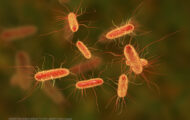Indiana is one of 20 states that does not permit the sale of raw milk, but it’s reconsidering. Earlier this year, the state Legislature passed a bill requiring the Indiana State Board of Animal Health (BOAH) to study the subject and produce a report by December 1, 2012. Just weeks before that deadline, Purdue Extension has published a raw milk FAQ.
 When BOAH was tasked with producing a report for the Legislature about the legalization of raw milk, it put the question to Indiana residents who were invited to submit comments, ideas and suggestions for a three-month period ending September 1. Hundreds of people responded.
When BOAH was tasked with producing a report for the Legislature about the legalization of raw milk, it put the question to Indiana residents who were invited to submit comments, ideas and suggestions for a three-month period ending September 1. Hundreds of people responded.
Raw milk is milk that has not been pasteurized. Pasteurization is the process of heating milk, usually to 161 degrees for 15 seconds. It was developed as a way to prevent people from becoming ill from harmful bacteria that milk can contain such as: Mycobacterium tuberculosis, which causes tuberculosis; Brucella melitensis, which causes brucellosis, Coxiella rickettsia, which casues Q-fever and other pathogens that can cause serious or fatal illness including: Salmonella, Yersinia, Toxoplasma, E. coli O157:H7, Campylobacter, Listeria monocytogenes, and Cryptosporidia.
Purdue Extension’s raw milk FAQ explains the process of pasteurization and addresses the concerns and misperceptions some people may have about it and covers the risks associated with drinking raw milk. For example, Question 3 is: Is Milk Altered By Pasteurization. “In a word, yes. Milk must be heated to a temperature at which some changes to protein molecules begin to occur. This is expected, as the damage to proteins is necessary to inactivate harmful bacteria. Indeed, the degradation of an enzyme, alkaline phosphatase, that is present in all unpasteurized milk samples is one of the key measures of the effectiveness of pasteurization. However, research has proved that pasteurization does not degrade the healthful benefits of milk.”
The report then lists milk components and how they are affected by the high temperatures of pasteurization.“Bovine lactoferrin from pasteurized milk has similar antibacterial properties to that from unheated milk. Lactoperoxidase retains 70 percent activity when heated to 161°F for 15 seconds, with further decreases in activity as the temperature is increased. Lysozyme (bacteriocide) lysozyme will surviveat 176°F for 15 seconds. Bovine immunoglobulin has no loss in activity when held for 30 minutes at 145°F, and retains more than 59 percent of activity after hightemperature, short-time pasteurization. Lactose (milk sugar) concentration is not changed by pasteurization. Caseins’ and whey proteins’ nutritive values are largely unaffected by pasteurization. Fat soluble vitamins A, D, E and K are not appreciably affected by pasteurization. Vitamin C, which is very low in cow’s milk, maybe reduced up to 10 percent by pasteurization. Bacterocins are heat stable and remain heat stable following pasteurization. Oligosacharides are heat stable.”
Because raw milk enthusiasts will often refer to pasteurized milk as “dead,” one section of the FAQ addresses this idea that pasteurization kills beneficial bacteria in milk. “It is true that some bacteria are present in milk, such as Lactobacillus species, and that those bacteria may aid in the digestion of lactose. However, those bacteria are generally not present in cow’s milk before it exits the udder. Thus, it arises from post-milking, unintentional contamination of the milk. If milk is contaminated by beneficial bacteria, it also may be contaminated by harmful bacteria. Beneficial bacteria can be added back to milk in cultured dairy products. For example, yogurt is produced through the culturing of milk with pure cultures of beneficial bacterias (e.g.,Lactobacillus delbrueckii subspecies bulgaricus and Streptococcus thermophiles) and provides a safer source ofdelbrueckii subspecies.”
And what about the risks of drinking raw milk? “Clearly, the risks of unpasteurized milk consumption are in the possible contraction of the diseases mentioned above. Most of the time risks from consumption of unpasteurized milk are not great, but the health consequences if one contracts the disease can be very serious, or even fatal. There is no doubt that pasteurization reduces the risk. While there have been outbreaks of disease from pasteurized dairy products that were recontaminated or not properly pasteurized, the number of such occurrences is far, far less in proportion to the amount of milk consumed as pasteurized versus non-pasteurized. Furthermore, many environmental factors influence the risk that milk may be contaminated, and these vary greatly from farm to farm and week to week on any given farm.”
The FAQ, which contains links to other resources, can be viewed by clicking here.




